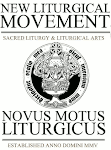
It is suggested that only if there is one Missal for use throughout the Western Church that there will be unity, but this was never the case before the Second Vatican Council.
The Roman Missal
Until 1570, when what was a slightly tidied up version of the Roman Missal - which until then had been of obligation only in the Stational churches of Rome - was imposed on the Western Church, there had not been only one Latin Missal in general use. Even in 1570 there was not only one Missal because the Bull Quo primum tempore which made the Roman Missal of obligation in the West permitted the continue use of those Missals which have been in use for two hundred years previously. The local Missals of Milan, Braga, Lyons and, for for some considerable time, a number of other French Dioceses, continued in use as did the Missals of various orders: The Premonstratensian Canons, yhe Carthusian Monks and the Carmelite and Dominican Friars, among others, retained their distinctive Missals, some of them right up to the reforms of modern times. The missals of Milan, the Mozarabic missal in Spain and the Carthusian Missal - reformed in line with the Ritus Modernus, albeit different from the new Roman Missal - are in use as is the Braga Missal.
English Missals
The various English Missals continued to be used after 1570. They would, perhaps, have been in use still, maybe in a reformed version, if the situation in post-Reformation England had not led to priests being trained in Europe where they learnt to celebrate according to the Roman Missal of 1570. In 1850 when the Catholic hierarchy of England and Wales was restored, the new episcopate was offered the possibility of restoring the use of the Sarum Missal, but the bishops refused the offer preferring to retain the Pius V Missal.
Uniformity of language
Those who say all must use the same Missal are being rather "Tridentine" in taking this attitude, but without Pius V's more relaxed attitude towards previously used Missals. There was almost complete uniformity in the language used for celebrations using an of these Missals; Latin was the language no matter what Missal was being used; there was one exception to that rule, in Southern Italy there was a diocese where the Roman Rite was celebrated in Greek.
The Traditional Roman Missal
If the Middle Ages could manage to get along with many Missals, if after Trent a similar situation could continue, without detriment to the unity of the Church, then why not now? There are those in the Curia who admit this, but seem to consider it sufficient to allow greater use of the 1962 reformed Missal alongside such others Missals as are now in use. Why not also the Traditional Roman Missal which we happily used until the beginning of the reforms of the last three decades?
Before the introduction of the new liturgy, there were in daily use in England the Roman Missal, the Dominican Missal, the Carmelite Missal and the Carthusian Missal. Over the centuries the Premonstratensian Missal had been more and more Romanised until it was eventually replaced by the Roman Missal.
Many Missals in Italy
In Italy as well as the Roman Missal, the missals of the religious orders and the Greek Missal already mentioned, there was another Southern Italian diocese which celebrated the Liturgy of St John Chrysostom, the Byzantine Liturgy, in Latin, and Milan and parts of the diocese of Bergamo - the diocese in which Pope John XXIII was born - used the Ambrosian Missal.
The Mozarabic Missal
There was a time when two different Missals were in use in Spain. Often in the same village there were two churches; one for the Roman liturgy, the other where celebrations were according to the Mozarabic Missal (reformed) is now used only in one chapel of Toledo Cathedral.
No disunity
The use of a multiplicity of Missals caused no disunity in the Church. Only the Missals of 1962, 1965 and 1970 can claim this distinction.
An American liturgist, Fr Frederick MacManus, who sat on the Commission which drew up the new rites , wrote: "It is easy to confuse stability and immutability, to canonise uniformity in place of unity.There is a desirable measure of uniformity, especially in a given rite of the Church, such as the Roman Rite, but this principle must be applied in moderation; diversity too can be a proof of beauty and excellence, even when it is not almost a necessity" (my emphasis).
Sauce for the goose
Fr MacManus was, of course, using this argument to support his desire for the introduction of a Ritus Modernus, but what is sauce for the goose... Traditional Catholics are entitled to argue for the principle of uniformity to be applied in moderation and diversity to include our right to use the liturgical books of the Roman Rite as they existed before the start of the unwanted reform.








0 comments:
Post a Comment